I do >> NOT << introduce you to any "cheap" pump & dump shitcoins! I cover only coins and tokens whose technology I like, who have potential in the future and which are currently offered imo below their value. This is of course a subjective opinion, but I try to bring you my arguments. Whether you see it this way or not, you are welcome to leave it in the comments.
This Thursday it's about ETHLend.
Disclaimer: This is not financial advice. Do your own research before investing + I have LEND tokens so might be biased.
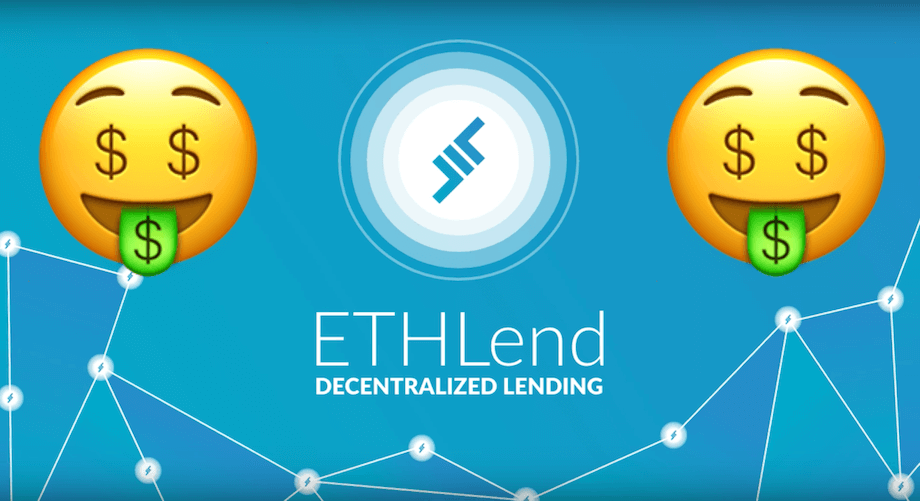
Source: Screenshot YouTube Promo Video + Emojis

Source: Screenshot coinmarketcap.com January 18th, 2018
ETHLend in a nutshell
ETHLend is >> NOT << a lending platform like Bitconnect!
ETHLend promises financial services to people who can't otherwise afford financial services. I think their video explains best how the ETHLend platform should work.
In short, anyone can lend to anyone (peer-to-peer), with a self-selected interest rate. The goal of ETHLend is to provide a transparent and global credit market and to eliminate interest rate differentials between countries.
Prototype
The current prototype was released about a month ago and is still in alpha phase (version 0.2). Honestly, you can see that, but what really matters is that it works. ETHLend has so far achieved more than $ 1.5 million (approximately 1,500 ethers) in lending volume. Furthermore, they have presented the first screenshots of the new UX for their app:


Source: https://blog.ethlend.io/we-couldnt-resist-user-interface-official-leak-44cd2d4418d
Functionality
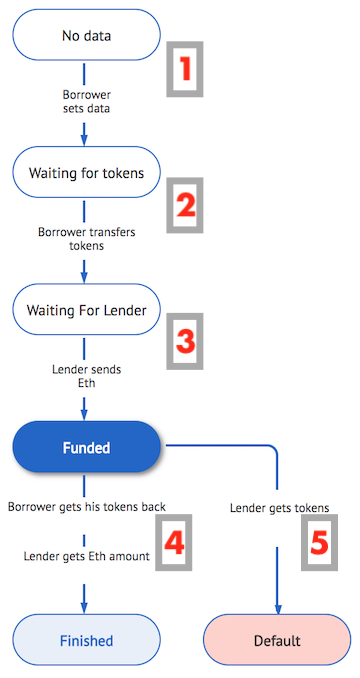
Source: Screenshot app.ethlend.io
The current functioning of the prototype is easily explained. The depicted modeling of the process can be found next to each loan. I want to explain this a little bit closer:
- First, the borrower must enter data. These include the amount of the loan, its security, the length of time and the amount of interest.
- Now the borrower has to send his security, ie currently enough ERC20 tokens, to a smart contract.
- Once deposited, anyone (including you and me) can act as a lender by sending the borrower's required ether to the smart contract.
- If the borrower repays the borrowed ether + interest, he will get back his security (the token ERC20 tokens).
- If he fails to repay everything in the pre-determined time, the lender will receive all ERC20 tokens.
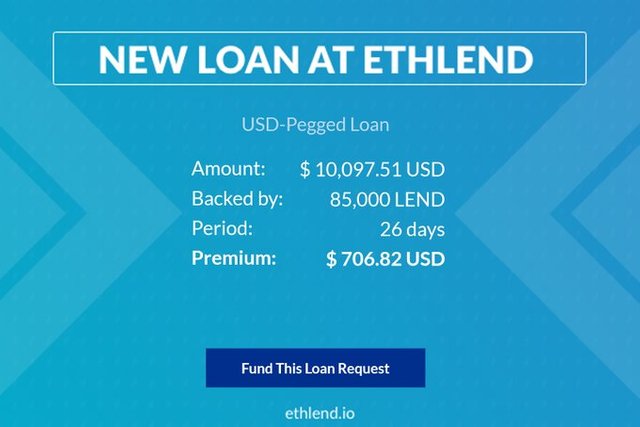
Source: https://twitter.com/ethlend1/status/953815313069551616
Competitors
Currently, there is no competitor that has exactly the same goal as ETHLend. This is a huge advantage in my opinion. Even if competitors emerge in the future, ETHLend has the first mover advantage. However, I have to mention SALT and Elixir. These have a similar goal as ETHLend, but work a bit differently.
a) SALT
SALT (https://saltlending.com/) allows Bitcoins to be used as collateral and then borrowed for cash. Unlike ETHLend, SALT works only with accredited investors. I think this is a condition set by US law, not because they want to do it that way.
For example, if someone is already quite wealthy and is afraid to invest in the crypto market because they do not want or understand it, they can do it with SALT anyway. One can use the SALT loan platform to lend Fiat currency at a 10% interest rate. Right now, if someone is a wealthy person, you have the option to leave money in the bank and probably get 1% or 2% interest, or you can borrow money on the decentralized loan platform SALT and get 10%.
SALT is more like a traditional bank that allows you to get fiat money at a fixed rate (10%) by depositing your bitcoin as collateral. However, this does not happen on chain and is not decentralized.
b) Elixir
Elixir (https://elixirtoken.io/) has a much smaller team (currently 2 men versus about 20 men) and still no working product. They also focus more on crowdfunding than pure peer-to-peer lending.
I have to confess, that I did not have time to read the white paper yet and that information comes from a quick and dirty Google search.
Risks
a) Regulations
ETHLend is currently not allowed in the US and only in the US. But this shouldn't be new for you, as many ICOs and other tokens, especially security tokens, are banned there. In my view, the United States should ease the reins (that's how you say in Germany - so they should stop that :D ) a little, but there is a danger that more countries will lean on the US and adopt its tough guidelines and thus ETHLend could be available in fewer countries in future. The planned move to Zug in Switzerland this quarter certainly has something to do with it, as Switzerland is known as a crypto-friendly country.
b) Ethereum based
As CryptoKitties has shown, Ethereum is not yet well scalable and more and more tokens are based on it. This could lead to problems as loans may not be repaid in time or the like. However, Ethereum is working on solutions and I hope you can solve the scaling problem in a timely manner.
c) Collaterals
The problem with giving money to people who have no money is to make sure that the lender feels safe even if there are no monetary collateral such as ERC20 tokens that can be deposited in a smart contract. It's difficult when collateral can't easily be exchanged for cash. For example, if someone wants to lend money by using a pig as collateral. How is this handled if the person can not repay the money?
ETHLend's goal is to accept all types of collateral, including trust in the form of an identity (collaboration with Civic) or similar. This will show how secure this will be in the future and whether it will be accepted by the people. Therefore, ETHLend also depends to some extent on projects like Civic.
Conclusion
It has the makings of becoming a decentralized bank and we know what an important role lending in our world plays. Global debts amount to about $ 215 trillion, about 300 times more than the entire crypto market and about 1.000.000 times of ETHLends current market cap. The prototype is promising and with a new UX many more people could use ETHLend to lend and lend money. Adoption, as with all other cryptocurrencies, is the most important thing. And reaching $ 1.5 million in one month is a very good sign of acceptance. However, there are also many risks in the room, not just banks that do not want to lose their power, but also government regulation and reliance on other projects such as Ethereum or Civic.
I own some LEND Tokens (about 5% of my portfolio) because I see huge potential for the future. I see in the top 20 cryptocurrencies for the next 3 years, as the entire crypto market continues to be accepted and more and more people are using cryptocurrencies and are actually using them to pay. Incidentally, I also own a bit of SALT (about 2%).
Did you invest in LEND or what's your opinion about it?
Related Links:
- CoinMarketCap: https://coinmarketcap.com/currencies/ethlend/
- Website: https://ethlend.io/ge/
- Blog: https://blog.ethlend.io/
- Twitter: https://twitter.com/ethlend1
- Whitepaper: https://github.com/ETHLend/Documentation/blob/master/ETHLendWhitePaper.md
If you plan to buy LEND I recommend you Binance and if you do not have an account I would be glad if you would use my Refferal link (15788216).
Hello Steemit,
my name is Chris and I'm from Germany.
I study computer science and I love cryptocurrencies.
My goal is to deliver you well-researched articles.
Most of my content is bilingual 🇺🇸🇩🇪
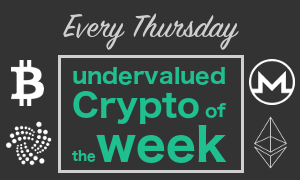
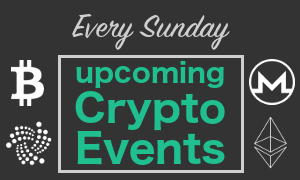

Coins mentioned in post:
Downvoting a post can decrease pending rewards and make it less visible. Common reasons:
Submit
This post has received a 0.88 % upvote from @boomerang thanks to: @chkoenig
Downvoting a post can decrease pending rewards and make it less visible. Common reasons:
Submit